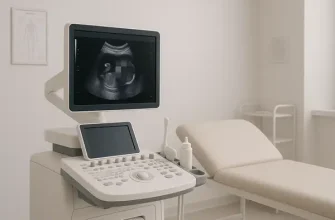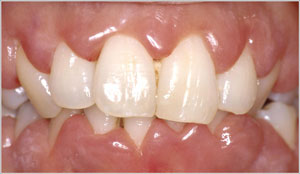The placenta is a temporary organ that develops during pregnancy to provide oxygen and nutrients to your baby while removing waste products. Its position in the uterus can influence aspects of your pregnancy, such as fetal development and delivery. But what does it mean when the placenta is in the posterior position?
Placenta Position Distribution
| Position | Distribution (%) |
|---|---|
| Posterior | 50% |
| Anterior | 30% |
| Fundal | 10% |
| Low-lying | 5% |
| Other | 5% |
What is a Posterior Placenta?
A posterior placenta means the placenta is attached to the back wall of the uterus, closer to the spine. This position is one of the most common and natural placements for the placenta during pregnancy.
How is the Placenta Position Determined?
Your doctor will typically determine the position of the placenta through an ultrasound scan, usually around the 20-week anatomy scan. During the scan, they will check the location of the placenta, amniotic fluid levels, and overall fetal development.
Is a Posterior Placenta Normal?
Yes, a posterior placenta is completely normal. It does not pose any additional risks to your pregnancy. In fact, many medical professionals consider it an ideal position because it allows the baby to grow and move freely in the uterus.
Does the Posterior Placenta Affect Fetal Movement?
Many expectant mothers with a posterior placenta report feeling fetal movements earlier compared to those with an anterior placenta (where the placenta is at the front of the uterus). The placenta’s placement at the back makes it easier to feel the baby’s kicks and movements.
- Fetal Movement Timeline: With a posterior placenta, movements may be felt as early as 18-20 weeks for first-time mothers and even earlier for subsequent pregnancies.
Fetal Movement by Placenta Position
Benefits of a Posterior Placenta Position
A posterior placenta offers several advantages:
- Easier Detection of Baby Movements: Without the placenta acting as a cushion, fetal movements are often stronger and more noticeable. For example, Sarah, a 28-year-old mother of two, felt her baby’s first strong kicks at just 19 weeks. Compared to her first pregnancy with an anterior placenta, the difference was noticeable, making her feel more connected to her baby early on.
- Less Interference with Ultrasounds: A posterior placenta allows for clearer ultrasound imaging of the baby. Take Mary, a 32-year-old expectant mother, who shared how her anatomy scan revealed detailed images of her baby’s face and hands. Her doctor commented that the posterior placenta gave an excellent view, helping monitor the baby’s development more effectively.
- Ideal for Vaginal Delivery: The posterior position generally does not obstruct the baby’s passage during delivery. Jessica, a 30-year-old first-time mom, had a smooth labor experience with her baby positioned head-down in the birth canal. Her posterior placenta allowed for optimal positioning, which made the delivery process less complicated and more straightforward.
Can the Placenta Change Position?
Yes, the placenta can move as the uterus expands throughout pregnancy. However, significant changes are more likely to happen in the first half of pregnancy. By the third trimester, the placenta’s position is typically stable.
Does a Posterior Placenta Impact Labor and Delivery?
The posterior position is often ideal for labor and delivery. Here’s why:
- The placenta does not obstruct the baby’s descent into the birth canal.
- It allows for optimal positioning of the baby, which can facilitate a smoother vaginal delivery.
Are There Risks Associated with a Posterior Placenta?
While a posterior placenta is typically harmless, it’s important to be aware of potential complications that can occur with any placental position:
- Placenta Previa: A condition where the placenta partially or fully covers the cervix, potentially causing complications such as bleeding in the second or third trimester. For example, a 34-year-old woman experienced placenta previa at 28 weeks, leading to bed rest and close monitoring to prevent preterm labor. In many cases, the condition resolves naturally as the uterus grows and the placenta shifts upward.
- Placental Abruption: Rarely, the placenta can detach from the uterine wall, which requires immediate medical attention to avoid severe consequences for both the baby and mother. For instance, a 29-year-old woman reported sudden severe abdominal pain at 32 weeks, accompanied by heavy vaginal bleeding. She was diagnosed with placental abruption and required an emergency C-section to save her baby, who was born healthy but premature. While placental abruption occurs in less than 1% of pregnancies, risk factors include high blood pressure, trauma to the abdomen, and smoking during pregnancy.
Placental Complications Incidence
| Complication | Incidence (%) |
|---|---|
| Placenta Previa | 1-2% |
| Placental Abruption | <1% |
| Placenta Accreta | 0.2% |
When to Contact Your Doctor
If you experience any of the following symptoms, consult your doctor immediately:
- Vaginal bleeding, which can vary from light spotting to heavy flow, depending on the cause.
- Severe abdominal pain that may be sharp, persistent, or cramp-like, potentially signaling placental complications or uterine distress.
- Reduced fetal movements, such as a noticeable decrease in the baby’s kicks, rolls, or overall activity, which could indicate fetal distress or placental insufficiency.
Did You Know?
The placenta is a unique organ that grows with your baby! By the time you deliver, the placenta will weigh about 1-2 pounds and measure approximately 9 inches in diameter. Interestingly, studies show that a healthy placenta is essential for regulating the baby’s immune response and nutrient absorption, further emphasizing its critical role during pregnancy.
FAQs About Posterior Placenta Position
1. Can a posterior placenta affect the baby’s gender? No, the position of the placenta does not influence the baby’s gender. This is a myth that has no scientific backing.
2. Can exercise or movement cause the placenta to move? No, the placenta’s position is determined by where it initially implants and is not affected by physical activities.
3. What if my placenta is low-lying but posterior? A low-lying placenta may require monitoring, as it could increase the risk of placenta previa. However, in most cases, the placenta migrates upward as the uterus expands.
Editorial Advice
A posterior placenta is a normal and favorable position that does not typically pose risks to your pregnancy. Understanding its position can help you prepare for an optimal pregnancy and delivery experience. Always stay in touch with your healthcare provider to monitor your baby’s development and placental health.









